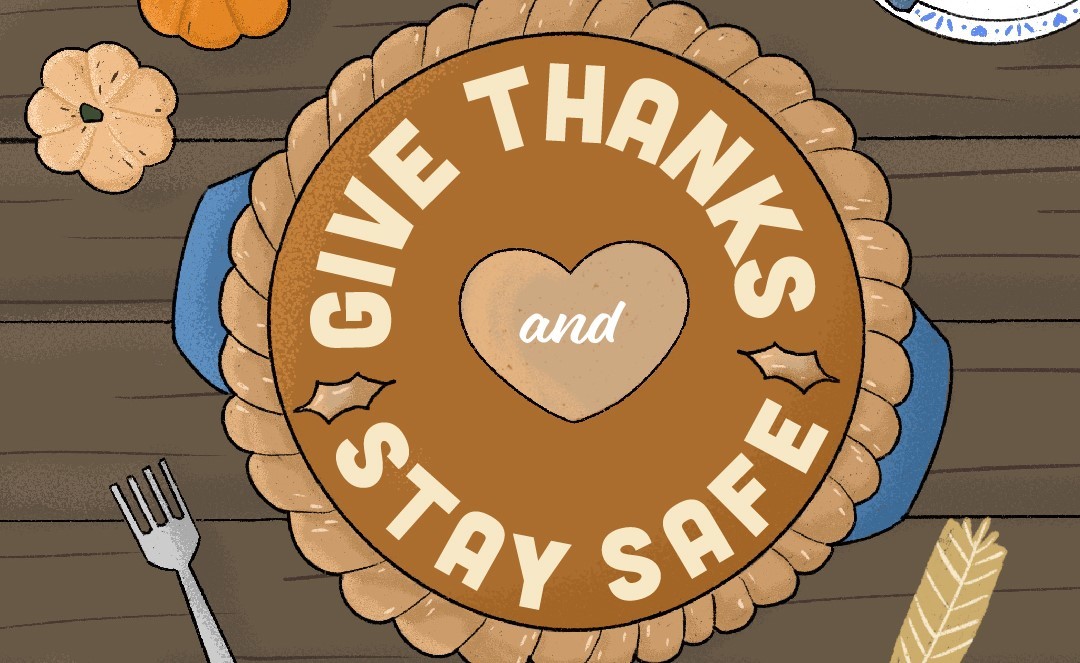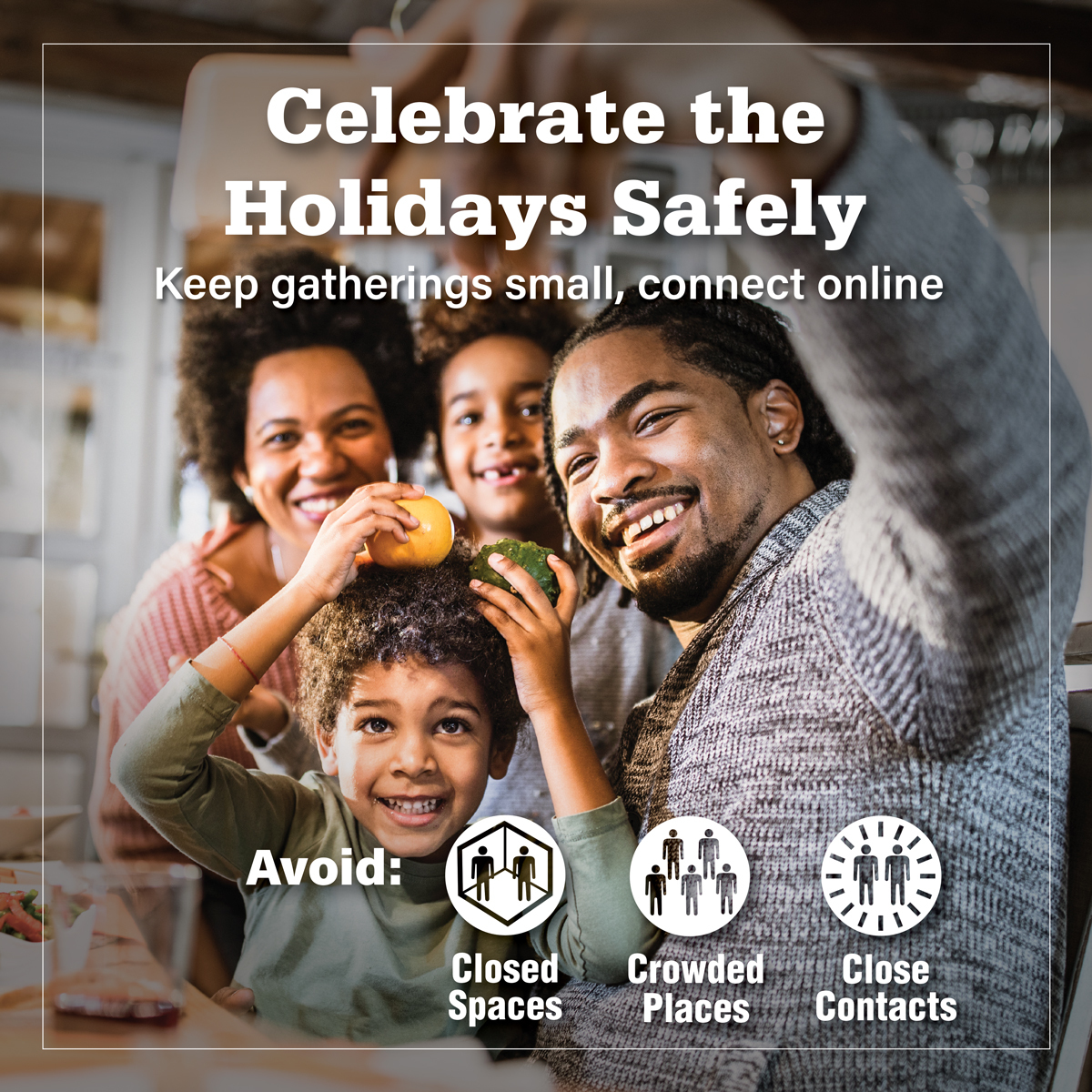Statewide COVID-19 Communications: Nov. 19, 2020 update for partners
Alaska Department of Health sent this bulletin at 11/19/2020 03:02 PM AKST
Nov. 19, 2020 update for partners
Dear Community Partners:
As we head into the holidays, we need to help our communities celebrate as safely as possible. As with many other aspects of life, celebrating holidays in 2020 will be different, but we can provide guidance and encouragement.
The recent high case counts of COVID-19 have put everyone under a great deal of strain, but please do not see it as a failure of all our collective efforts. The work we have been doing alongside our colleagues has been saving lives from the beginning. That is why we’re here, to collectively work together for the health of all Alaskans. It is invaluable work, so please keep going – but be sure to take breaks and take care of yourself too. We can't thank everyone enough for helping keep Alaskans healthy, safe and informed about COVID-19.
If you have questions or would like something included in the next update, email items to sue.libenson@alaska.gov, kathleen.griffith@alaska.gov, or elizabeth.manning@alaska.gov, with the subject: COVID-19 Week in Review.
Rules expand to cover intrastate travel. Testing at airports remains extended to end of year.
Under Governor Dunleavy's new disaster declaration, effective Nov. 16, the previously issued mandates and provisions from SB 241 have been replaced with new COVID-19 outbreak health orders. Outbreak Health Order No. 8 expands travel rules to cover travel between locations in Alaska. Part A of the order went into effect Nov. 16 and allows communities to adopt stricter protections and testing for travel within the state. Part B of the order goes into effect Nov. 21 and requires those who travel to communities not served by roads or the Alaska Marine Highway System to maintain social distancing until they produce a negative result from a recent COVID-19 test.
Health Order No. 6 provides the requirements for safely entering the Alaska, including COVID-19 testing protocols. Those requirements have not changed and are the same that were contained in the most recent revision of Health Mandate 10, which is no longer in effect. Residents can still opt to forego testing and quarantine for 14 days instead.
The State of Alaska also will continue to provide free testing to residents at airports through at least the end of the year.
Visit the Safe Travels website to find more information, health orders, advisories and answers to frequently asked questions for both resident and nonresident travelers.
Governor's disaster declaration in effect until Dec. 15. State offices and local governments adopt new rules.
Governor Dunleavy's new 30-day COVID-19 Public Health Disaster Emergency Declaration went into effect Nov. 16 which keeps Alaska under an emergency declaration through Dec. 15, 2020. The Governor also urged businesses to encourage working remotely as much as possible and required masks for employees and visitors to state work sites.
Elsewhere, the Municipality of Anchorage issued an Emergency Order further limiting size of gatherings and for wearing masks both indoors and outdoors when it is not possible to maintain six feet of distance. The Matanuska-Susitna Borough's COVID-19 Directive #9 and Directive #10 require employees and the public respectively to wear masks inside borough facilities. Joint Base Elmendorf-Richardson issued a new public health declaration which includes several measures to combat spread of the virus and applies to anyone accessing the base. Mask-wearing is mandatory for anyone over 2 years old and there are limits on gatherings. The Yukon-Kuskokwim Health Corporation recommended a month-long lockdown for the region to prevent overwhelming the region's health care system. Utqiaġvik has extended its Hunker Down Order through the end of November.
Need advice for young company home for the holidays?

- Get tested: Know you're negative. Get a COVID-19 test 72 hours before you leave or at the airport in Alaska when you arrive. Get a second test after you've been home for 5 days. If you feel sick at any time, get tested and isolate yourself until you get negative results.
- Practice STRICT social distancing for at least the first 5 days after arrival and until a second negative result is returned. This means keeping six feet away from anyone not in your immediate household and wearing a face covering. Don't enter restaurants, bars, gyms, community centers and sporting facilities (i.e., ice rinks, gymnasiums, sports domes). Don't participate in any group activities, including sporting events and practices, weddings, funerals or other gatherings.
- It's 2020. Take it outdoors. You're an Alaskan, so you know how to take it outdoors! 2020 is the year to put those skills to use. Stay outdoors, keep groups small, maintain at least six feet of distance between people from different households and wear fabric face-coverings.
- Don't share drinks, joints or vaping devices.
Holiday graphics to share
It’s been a long year and we’re all missing our friends and family. It may be tempting to hold a holiday gathering inside, but these gatherings increase the chances of spreading COVID-19 at a time when cases are sharply rising. Keep your celebration small and connect with loved ones online. We'll be following up shortly with another email containing graphics, social media content and PSA scripts to share with your communities. We should have a radio spot and an animation ready later this week.
 Ideas for celebrating safely from DHSS and CDC
Ideas for celebrating safely from DHSS and CDC
This fall and winter, the lowest-risk celebrations involve staying close to home and avoiding air travel, as well as getting together in-person with only immediate family or your small household bubble.
There are many safer ways for families to celebrate the season. Go caroling outside with your family. Exchange your favorite holiday recipes with friends, and then hold a cooking party over Zoom. Celebrate the spirit of giving by finding ways to help and serve your neighbors or elders in the community. Check out this DHSS blog for ideas and guidance.
Planning a safe Thanksgiving
The CDC recently released advice for how to safely celebrate Thanksgiving. In addition to the usual need to cook food properly, this year we need to consider:
- Having a small dinner with only people who live in your household
- Preparing traditional family recipes for family and neighbors, especially those at higher risk of severe illness from COVID-19, and delivering them in a way that doesn’t involve contact with others
- Having a virtual dinner and sharing recipes with friends and family
- Shopping online rather than in person on the day after Thanksgiving or the next Monday
- Watching sports events, parades and movies from home
Subscribe to the new MMWR podcast series
The MMWR Weekly COVID-19 Briefing is a weekly podcast to update readers on the latest scientific information from CDC’s COVID-19 response. In each episode, MMWR Editor-in-Chief Dr. Charlotte Kent provides an overview of the latest scientific information published in MMWR. New episodes are posted every Monday. Subscribe on Apple Podcasts, Stitcher, Spotify and Google Play. Subscribe to MMWR emails here.
COVID-19 Alaska Weekly Case Update: November 8-14, 2020
This data summary covers COVID-19 in Alaska from Sunday, Nov. 8 through Saturday, Nov. 14. Read the full report here.
Highlights
- Virus transmission across Alaska increased for the seventh week in a row.
- Hospitalizations for COVID-19 continue to rise. Hospital capacity and staffing have become a significant concern.
- Positivity rates for arriving travelers getting tested at Alaska airports have nearly doubled over the last two weeks, illustrating an increased risk of travel.
- Testing is not keeping up with new cases.
- Alaskans should get tested immediately at the first sign of any symptoms. Testing is our best tool for understanding virus transmission and risk in our communities.
- Most Alaskans get COVID-19 from a friend, family member or coworker. Alaskans should avoid indoor gatherings with non-household members, avoid crowds, wear masks when around non-household members and stay six feet from anyone not in their household.
Check these pages and social media accounts for recent updates, as well as messages and graphics you can share with your communities:
Thank you and have a great week!
- DHSS Public Information Team



